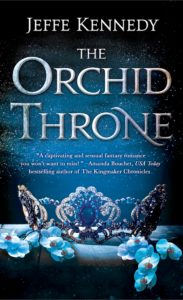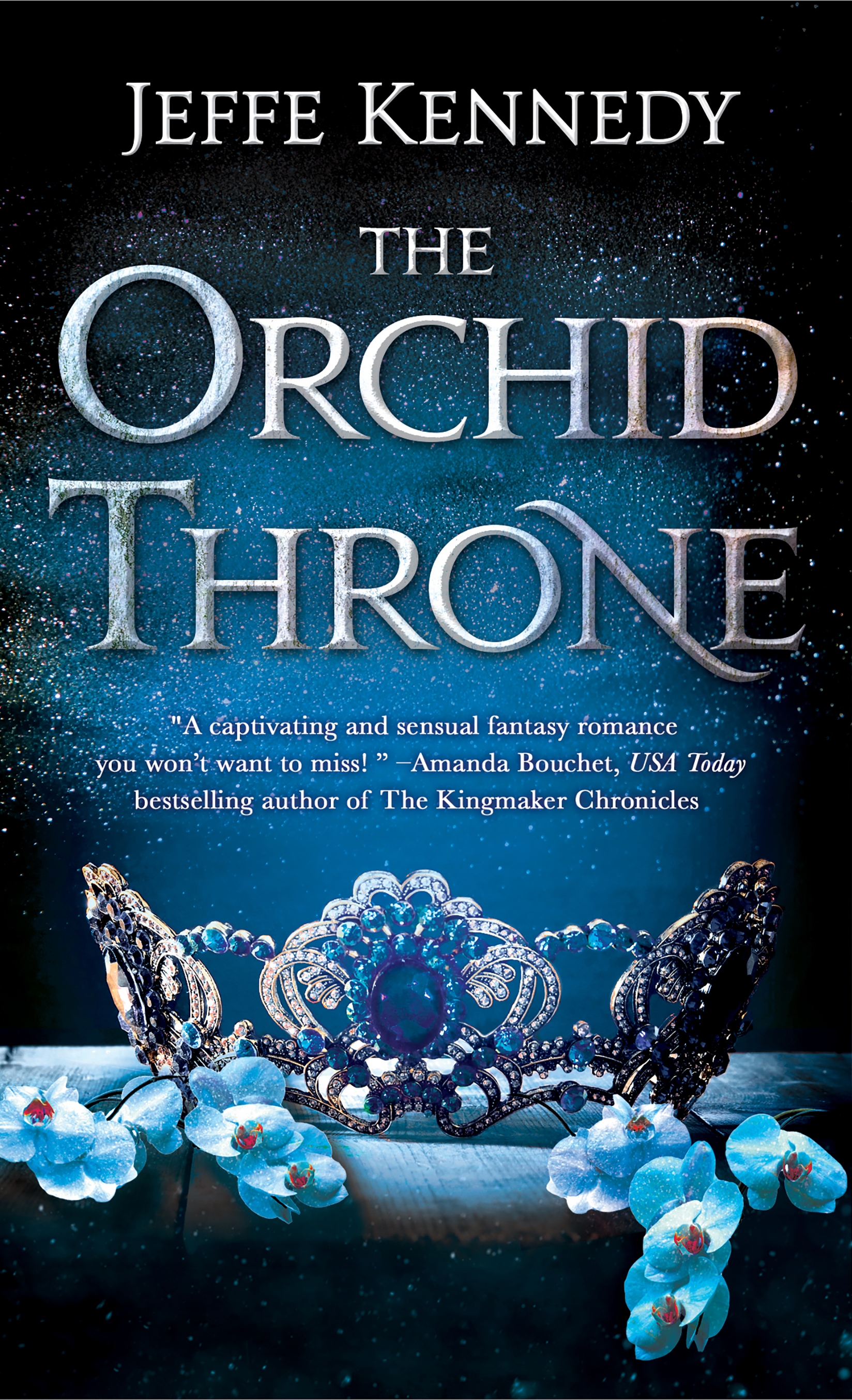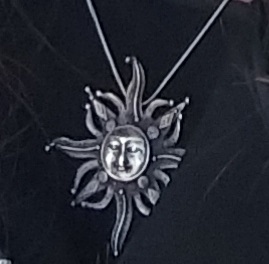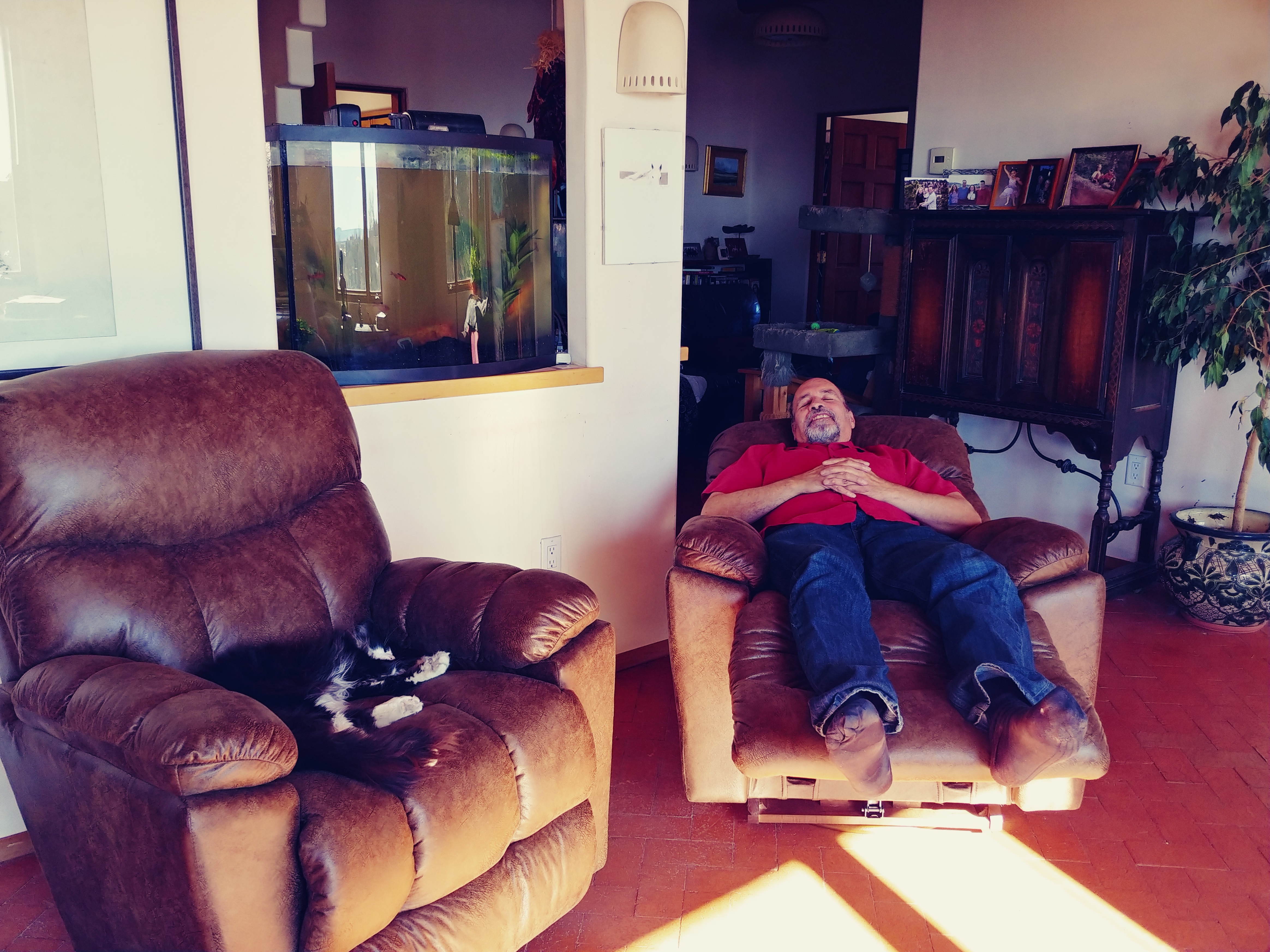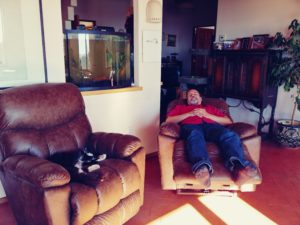
My two boys, enjoying the new recliners and the lovely sunlight of a winter afternoon. I feel sure if Jackson could make his recline, too, he would.


The recliners were a Christmas gift for David. The family all pitched in and we replaced the couch with them. There’s the Before and After. We actually ended up keeping the couch and moving it to another room, which entailed moving stuff from THAT room to an entirely different room, which meant moving the dresser into the closet, and the Big Closet Reorganization, that you may have seen me posting about the last few days. (Mostly on Facebook and Instagram, but there’s a pic here, too.)
It’s funny because, when I saw Megan Mulry Monday night (we saw The Favourite and had dinner after – if you want to hear my thoughts on the movie, you can listen here), I showed her the pics of the rearrangement. She’s house-sat for us before, so she was familiar with the previous set up. She agreed the recliners were a great idea – so much easier to swivel to watch movies, so comfy! – and then asked what I’d do about the fact that I have two other armchairs on the other side of the room. I started laughing and said, “Nothing! I’m leaving it as is, but my mother said the SAME THING.” So Megan starts laughing, too, saying “Omigod, me and your mom.” (Who she’s met and they enjoy each other.) And I said, “Yeah, my mom said, ‘but you can’t have chair, chair, chair, chair.'” Megan is still snorting into her beer, and says, “I know – like a meeting!”
I suppose I could put a conference table in the middle…
The thing is – and this is part of why Megan was laughing, because our mothers are very much alike, with Certain Social Standards – the reason I “can’t have chair, chair, chair, chair” because “it looks like a meeting,” is a consideration for entertaining. That’s what Certain Social Standards are all about. There’s nothing wrong with that, and I’m very glad that my mother taught me the social skills she did. I know a lot about entertaining and putting events together, skills that have come in very useful in my corporate work, my career as an author, and in my volunteer work for organizations like SFWA and RWA. Social skills are critical for careers of all kinds, even largely isolated ones like being a writer. My podcast on Friday has engendered a lot of conversation on the etiquette of thanking authors who provide blurbs.
But in this case, I draw a line, because David and I very rarely entertain. I do not host the Junior League meetings in my house, nor the Bridge Club. We occasionally have parties, though less often than we used to, mostly because it’s so much effort, but even then we have them outside whenever possible. When we do have a dinner party, we move everything around anyway. So why would we arrange our home with an eye toward having OTHER people like it?
I work from home. David is home a great deal, as he has irregular hours. We have a very pretty house with incredible views that we worked hard and dreamed long to acquire. It’s a place of peace and delight to us – so we set up the furniture in a way that adds to our relaxation and pleasure.
I think this speaks to a larger point of why we make the choices we do. How many of our choices are made to please other people, or to meet their expectations? How often do we make a conscious choice to go against Certain Social Standards and instead do the thing that people might laugh at, but that makes us happy?
Something to ponder.
